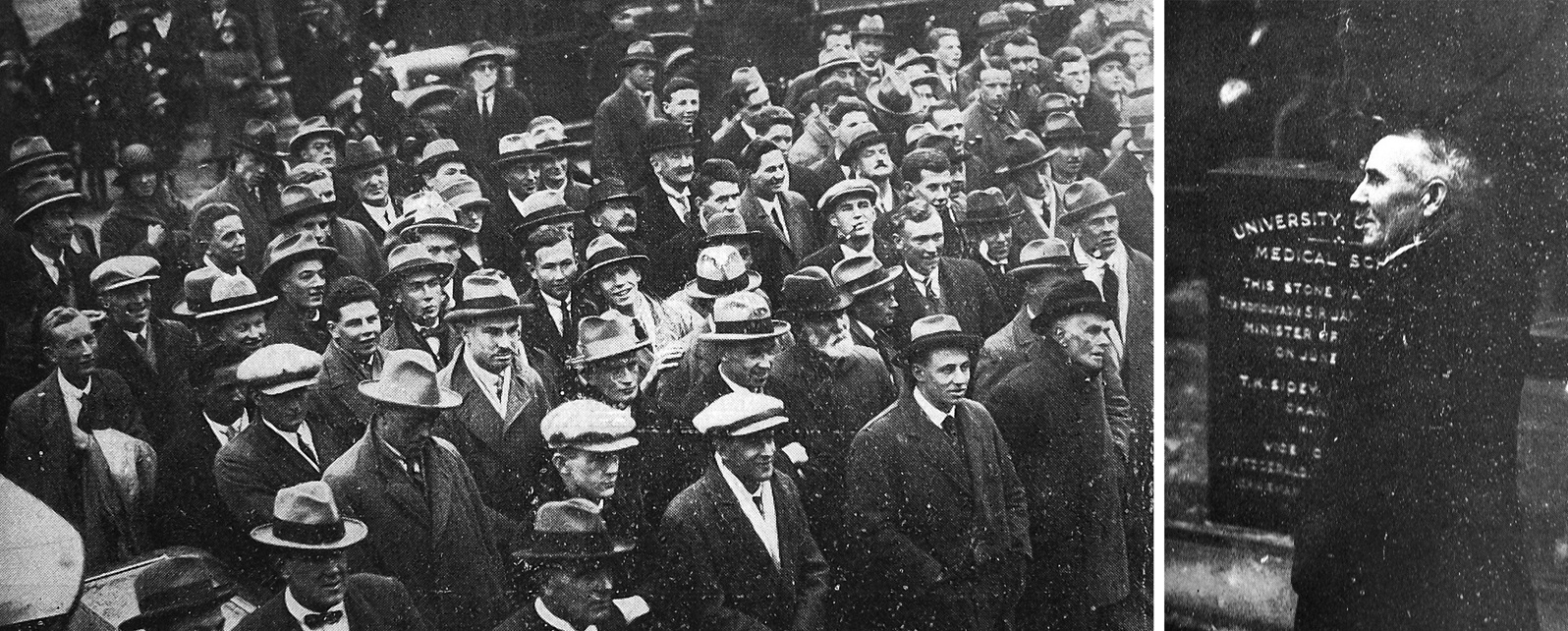

One of the most up-to-date
The building is of brick and Oamaru stone, the dimensions being 230 feet x 100ft — three storeys and basement on the street frontage and four storeys and basement over a section in the rear. The King street frontage is of striking appearance, and is designed in Renaissance style. The new building will accommodate the anatomy, physiology, and pharmacology etc. The special features in the anatomy department are the dissecting room, measuring 69ft x 49ft, museum 105ft x 51ft, and two lecture rooms, tho larger of which is 49ft x 35ft, the seats being arranged in amphitheatre type. The new histology department has a very modern classroom measuring 45ft x 40ft, with the necessary preparation room and laboratories all having direct communication. Physiology has a very fine lecture room measuring 37ft x 36ft, being on the amphitheatre principle; adjoining are preparation, diagram, and apparatus room. The larger of the chemistry rooms in this department measures 61ft x 49ft, and is to be fitted up on the most approved lines. The numerous laboratories, research, and experimental rooms are spacious, well lighted and airy. The main room in the pharmacology department measures 52ft x 21ft, and has operating and preparation rooms adjoining. Throughout the building are spacious rooms for professors, students, cloak rooms and laboratories. Large common rooms for both men and women students, the former measures 50ft x 23ft 6in, the latter 31ft x 25ft 6in. The main staircase is of concrete, and occupies a very central position just beyond the spacious entrance hall. This new structure, when completed, will be one of the most up-to-date medical schools of the present day. — ODT, 19.6.1925
Compiled by Peter Dowden












